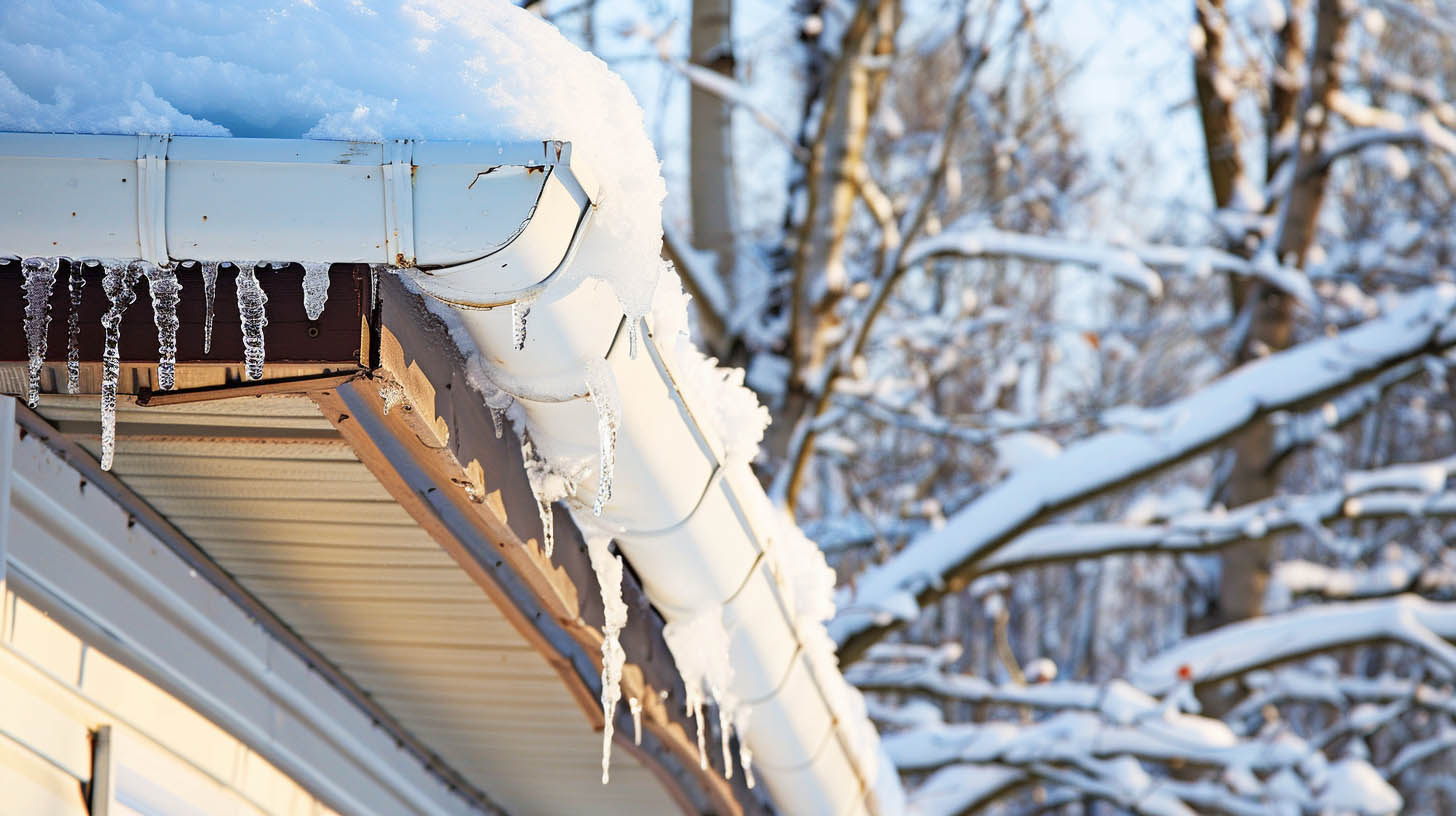Snow accumulation on your roof can pose significant risks if not properly managed. At Trojan Roofing, we help homeowners understand the potential dangers of excessive snow load and how to assess whether your roof can handle it.
Understanding Snow Weight
Snow’s weight is a more critical factor than its depth when assessing risk to your roof:
- Dry Snow: Light and powdery, dry snow typically poses little threat due to its lower density and weight.
- Wet Snow: Much heavier, wet snow can quickly become a problem with substantial accumulation. Wet snow can weigh six times more than an equal volume of dry snow.
Signs of Excessive Snow Load
Be vigilant for signs that your roof may be under too much strain from snow weight:
- Unusual Noises: Groaning or cracking sounds from the roof are urgent signs of stress.
- Structural Deformities: Issues like bowing door frames or doors that won’t close properly can indicate that the structural integrity is compromised.
- Visible Cracks: Any new cracks in the walls or ceiling should be taken seriously as potential signs of excessive snow load.
Preventive Measures and Maintenance
To prevent damage, it’s important to monitor snow accumulation and remove excess snow from your roof. Employing a roof rake or hiring a professional to safely remove snow can help mitigate these risks. Regular roof maintenance and inspections also play a critical role in ensuring your roof’s integrity during harsh winter conditions.
For insights on the risks associated with DIY roofing and why professional help is advisable, click here.
Conclusion
Understanding how much snow your roof can handle is crucial for maintaining the safety and integrity of your home during the winter months. Monitoring, maintenance, and timely intervention are key to preventing potential damage from snow load. If you suspect your roof is at risk, consult with the professionals at Trojan Roofing to ensure your home is protected and secure.

